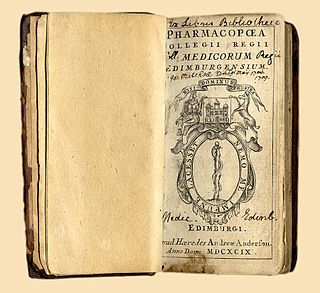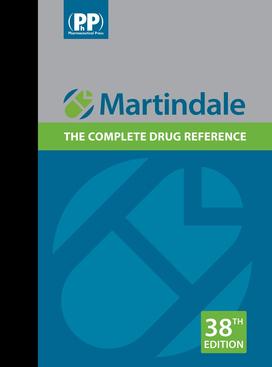
The British National Formulary (BNF) is a United Kingdom (UK) pharmaceutical reference book that contains a wide spectrum of information and advice on prescribing and pharmacology, along with specific facts and details about many medicines available on the UK National Health Service (NHS). Information within the BNF includes indication(s), contraindications, side effects, doses, legal classification, names and prices of available proprietary and generic formulations, and any other notable points. Though it is a national formulary, it nevertheless also includes entries for some medicines which are not available under the NHS, and must be prescribed and/or purchased privately. A symbol clearly denotes such drugs in their entry.

Rubbing alcohol is either an isopropyl alcohol or an ethanol-based liquid, with isopropyl alcohol products being the most widely available. The comparable British Pharmacopoeia (BP) is surgical spirit. Rubbing alcohol is denatured and undrinkable even if it is ethanol-based, due to the bitterants added.

A pharmacopoeia, pharmacopeia, or pharmacopoea, in its modern technical sense, is a book containing directions for the identification of compound medicines, and published by the authority of a government or a medical or pharmaceutical society.
The United States Pharmacopeia (USP) is a pharmacopeia for the United States published annually by the United States Pharmacopeial Convention, a nonprofit organization that owns the trademark and also owns the copyright on the pharmacopeia itself. The USP is published in a combined volume with the National Formulary as the USP-NF. If a drug ingredient or drug product has an applicable USP quality standard, it must conform in order to use the designation "USP" or "NF". Drugs subject to USP standards include both human drugs and animal drugs. USP-NF standards also have a role in US federal law; a drug or drug ingredient with a name recognized in USP-NF is considered adulterated if it does not satisfy compendial standards for strength, quality, or purity. USP also sets standards for dietary supplements and food ingredients. USP has no role in enforcing its standards; enforcement is the responsibility of the U.S. Food and Drug Administration (FDA) and other government authorities in the United States.
A British Approved Name (BAN) is the official, non-proprietary, or generic name given to a pharmaceutical substance, as defined in the British Pharmacopoeia (BP). The BAN is also the official name used in some countries around the world, because starting in 1953, proposed new names were evaluated by a panel of experts from WHO in conjunction with the BP commission to ensure naming consistency worldwide (an effort leading to the International Nonproprietary Name system). There is also a British Approved Name (Modified) (BANM).

The regulation of therapeutic goods, defined as drugs and therapeutic devices, varies by jurisdiction. In some countries, such as the United States, they are regulated at the national level by a single agency. In other jurisdictions they are regulated at the state level, or at both state and national levels by various bodies, as in Australia.
The Veterinary Medicines Directorate (VMD) is an Executive Agency of the Department for Environment, Food and Rural Affairs (Defra) seeking to protect public health, animal health, the environment and promoting animal welfare by assuring the safety, quality and efficacy of veterinary medicines in the United Kingdom.

BNF for Children (BNFC) is the standard UK paediatric reference for prescribing and pharmacology.

The European Pharmacopoeia is a major regional pharmacopoeia which provides common quality standards throughout the pharmaceutical industry in Europe to control the quality of medicines, and the substances used to manufacture them. It is a published collection of monographs which describe both the individual and general quality standards for ingredients, dosage forms, and methods of analysis for medicines. These standards apply to medicines for both human and veterinary use.

Martindale: The Complete Drug Reference is a reference book published by Pharmaceutical Press listing some 6,000 drugs and medicines used throughout the world, including details of over 125,000 proprietary preparations. It also includes almost 700 disease treatment reviews.

The European Directorate for the Quality of Medicines & HealthCare (EDQM) is a Directorate of the Council of Europe that traces its origins and statutes to the Convention on the Elaboration of a European Pharmacopoeia.
The Pharmacopoeia of the People's Republic of China (PPRC) or the Chinese Pharmacopoeia (ChP), compiled by the Pharmacopoeia Commission of the Ministry of Health of the People's Republic of China, is an official compendium of drugs, covering Traditional Chinese and western medicines, which includes information on the standards of purity, description, test, dosage, precaution, storage, and the strength for each drug.
A formulary is a list of pharmaceutical drugs, often decided upon by a group of people, for various reasons such as insurance coverage or use at a medical facility. Traditionally, a formulary contained a collection of formulas for the compounding and testing of medication. Today, the main function of a prescription formulary is to specify particular medications that are approved to be prescribed at a particular hospital, in a particular health system, or under a particular health insurance policy. The development of prescription formularies is based on evaluations of efficacy, safety, and cost-effectiveness of drugs.
A drug reference standard or pharmaceutical reference standard is a highly characterized material suitable to test the identity, strength, quality and purity of substances for pharmaceutical use and medicinal products.
The Pharmacy and Poisons Board is the Drug Regulatory Authority established under the Pharmacy and Poisons Act, Chapter 244 of the Laws of Kenya.
Drug nomenclature is the systematic naming of drugs, especially pharmaceutical drugs. In the majority of circumstances, drugs have 3 types of names: chemical names, the most important of which is the IUPAC name; generic or nonproprietary names, the most important of which are international nonproprietary names (INNs); and trade names, which are brand names. Under the INN system, generic names for drugs are constructed out of affixes and stems that classify the drugs into useful categories while keeping related names distinguishable. A marketed drug might also have a company code or compound code.
Because of the uncertain nature of various alternative therapies and the wide variety of claims different practitioners make, alternative medicine has been a source of vigorous debate, even over the definition of "alternative medicine". Dietary supplements, their ingredients, safety, and claims, are a continual source of controversy. In some cases, political issues, mainstream medicine and alternative medicine all collide, such as in cases where synthetic drugs are legal but the herbal sources of the same active chemical are banned.
The Food Chemicals Codex (FCC) is a collection of internationally recognized standards for the purity and identity of food ingredients.
Official Medicines Control Laboratory (OMCL) is the term coined in Europe for a public institute in charge of controlling the quality of medicines and, depending on the country, other similar products (for example, medical devices). They are part of or report to national competent authorities (NCAs).
The Spanish Agency of Medicines and Medical Devices is a regulatory and autonomous agency of the Government of Spain that acts as the highest sanitary authority in the country in terms of medical safety on medicines, health products, cosmetics and personal care products.







